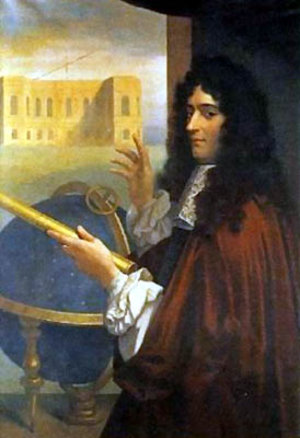Cassini-Huygens enters orbit around the ringed planet
ESA PR 36-2004. After a seven-year cruise through the Solar System, the joint NASA/ESA/ASI Cassini-Huygens spacecraft last night successfully entered orbit around Saturn.
The Cassini orbiter is now ready to begin its four-year survey of the planet and its moons, while the Huygens probe will be prepared for the next major mission milestone: its release toward the largest moon, Titan, in December.
“This shows international space co-operation at its best,” said ESA’s Director of Science, Prof. David Southwood, after confirmation of the orbit insertion. “Few deep space planetary missions have carried the hopes of such a large community of scientists and space enthusiasts around the world. Congratulations to the teams in the US and Europe who made this possible and to all participants in the programme, who have a lot to do over the years ahead.”
The Saturn Orbit Insertion was the last and most critical manoeuvre performed by the spacecraft to achieve its operational orbit. If it had failed, the spacecraft would have just flown past Saturn and got lost in the outer Solar System.

Cassini-Huygens was launched from Cape Canaveral, Florida, on 15 October 1997, atop a Titan 4B/Centaur, the most powerful expendable launch vehicle in the US fleet at the time. To reach Saturn it had to perform a series of gravity assist manoeuvres around Venus (April 1998 and June 1999), Earth (August 1999) and Jupiter (December 2000).
Last night, Cassini-Huygens approached Saturn from below the plane of its rings. Using its high-gain antenna dish as a shield to protect its fragile body from dust impacts, it first crossed the ring plane at 02:03 UT, some 158 500 kilometres from the centre of Saturn, in the gap that separates the F ring from the G ring. About 25 minutes later, at 02:36 UT, the probe fired one of its twin main engines for a 96-minute burn to enter orbit. The signal confirming this ignition took 84 minutes to reach Earth, some 1500 million kilometres from Saturn.
The burn went smoothly and reduced Cassini-Huygens’s relative velocity to Saturn while the probe passed only 19 000 kilometres from the planet’s upper clouds. After completion of the burn, the probe was tilted first toward Earth to confirm insertion and then toward Saturn’s rings in order to take close-up pictures as it flew only a few thousand kilometres above them. This was a unique opportunity to attempt to discriminate individual components within the rings, as Cassini is not planned to come this close to them again. The orbiter’s instruments also took advantage of its proximity to the planet to make an in-depth study of its atmosphere and environment.
A second crossing of the ring plane took place at 05:50 UT.

The spacecraft is in perfect shape to begin its tour of the Saturnian system with at least 76 orbits around the ringed planet and 52 close encounters with seven of its 31 known moons. This tour actually began before insertion with a close fly-by of an eighth moon, Phoebe, on 11 June. The primary target for Cassini-Huygens will be the largest of these moons, Titan, with a first fly-by at an altitude of 1200 kilometres on 26 October.
During the coming months, ESA’s scientists will prepare for the release of their main contribution to the mission, the Huygens probe, which will be released on 25 December to enter the atmosphere of Titan on 14 January 2005. Built for ESA by an industrial team led by Alcatel Space, this 320 kilogram probe carries six science instruments to analyse and characterise the atmosphere and its dynamics during its descent. If the probe survives the impact on reaching the surface, it will also analyse the physical properties of its environment after landing.
Actually bigger than Mercury, Titan features a hazy nitrogen-rich atmosphere containing carbon-based compounds. The chemical environment on Titan is thought to be similar to that of Earth before life, although colder (-180°C) and lacking liquid water. The in situ results from Huygens, combined with global observations from repeated fly-bys of Titan by the Cassini orbiter, are expected to help us understand the evolution of the early Earth's atmosphere and provide clues about the mechanisms that led to the dawn of life on our planet.
The Cassini orbiter, the largest and most complex deep-space vehicle ever launched, carries 12 science instruments developed by US and international teams to conduct in-depth studies of Saturn, Titan, the icy moons, the ring system and the magnetospheric environment. Two of the orbiter’s instruments were provided by Europe.

“More than twenty years have passed since Pioneer 11 and the Voyagers gave us a first glimpse of Saturn, as they crossed this complex system in only a few days,” explained Prof. Southwood, who is also principal investigator for Cassini’s magnetometer. “Now, with Cassini, we are here to stay, watch and investigate. And with Huygens we will go even deeper and further, not only plunging into an extraterrestrial atmosphere but also an atmosphere like the early Earth’s. This means we are travelling billions of years back into our own past to investigate one of the Universe’s best kept secrets: where we came from.”
The Cassini-Huygens mission is a co-operation between NASA, ESA, the European Space Agency and ASI, the Italian space agency. The Jet Propulsion Laboratory (JPL), a division of the California Institute of Technology in Pasadena, is managing the mission for NASA’s Office of Space Science, Washington.
For further information, please contact :
ESA Media Relations Division
Tel: +33(0)1.53.69.7155
Fax: +33(0)1.53.69.7690















 Germany
Germany
 Austria
Austria
 Belgium
Belgium
 Denmark
Denmark
 Spain
Spain
 Estonia
Estonia
 Finland
Finland
 France
France
 Greece
Greece
 Hungary
Hungary
 Ireland
Ireland
 Italy
Italy
 Luxembourg
Luxembourg
 Norway
Norway
 The Netherlands
The Netherlands
 Poland
Poland
 Portugal
Portugal
 Czechia
Czechia
 Romania
Romania
 United Kingdom
United Kingdom
 Slovenia
Slovenia
 Sweden
Sweden
 Switzerland
Switzerland

































